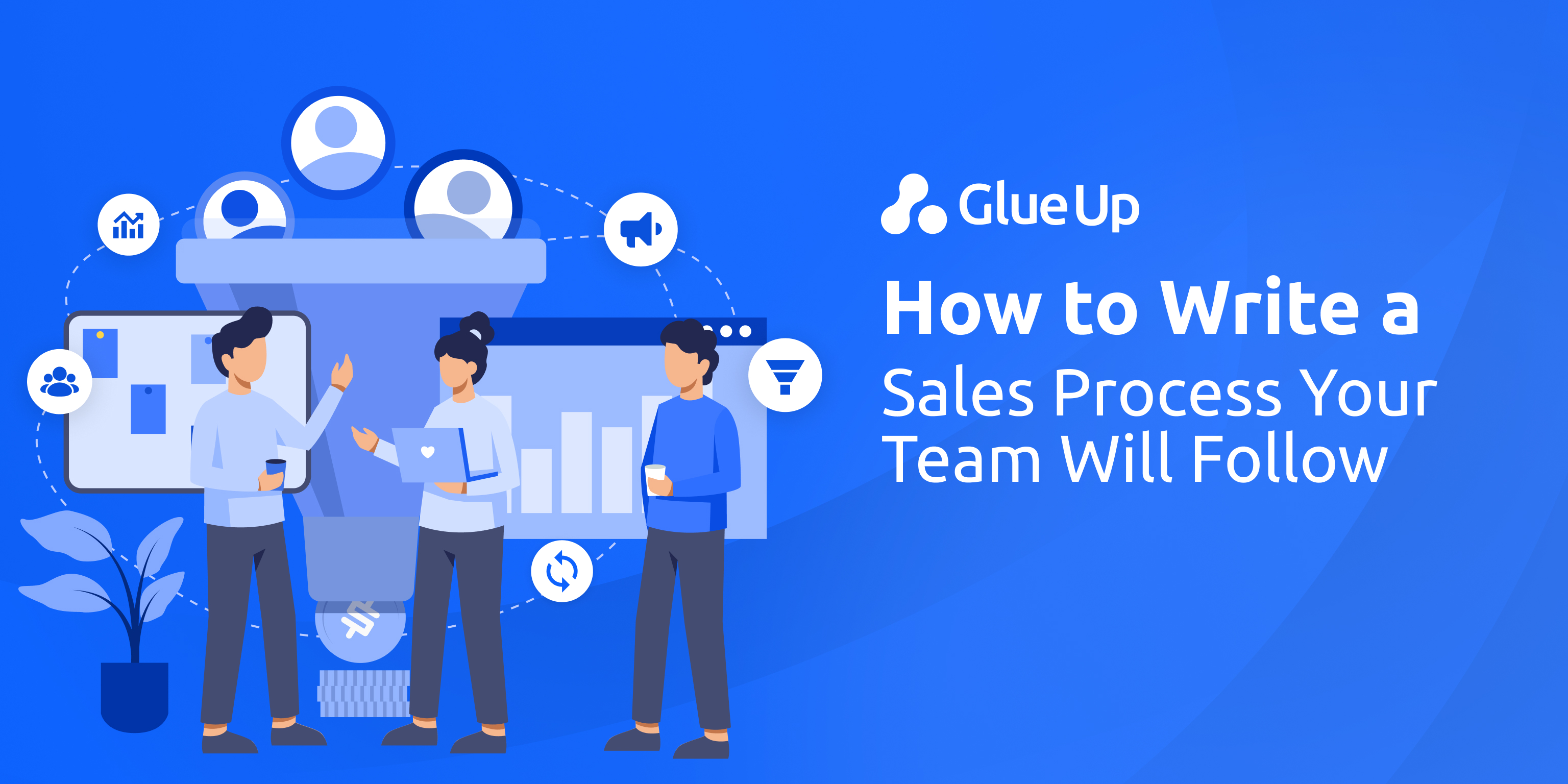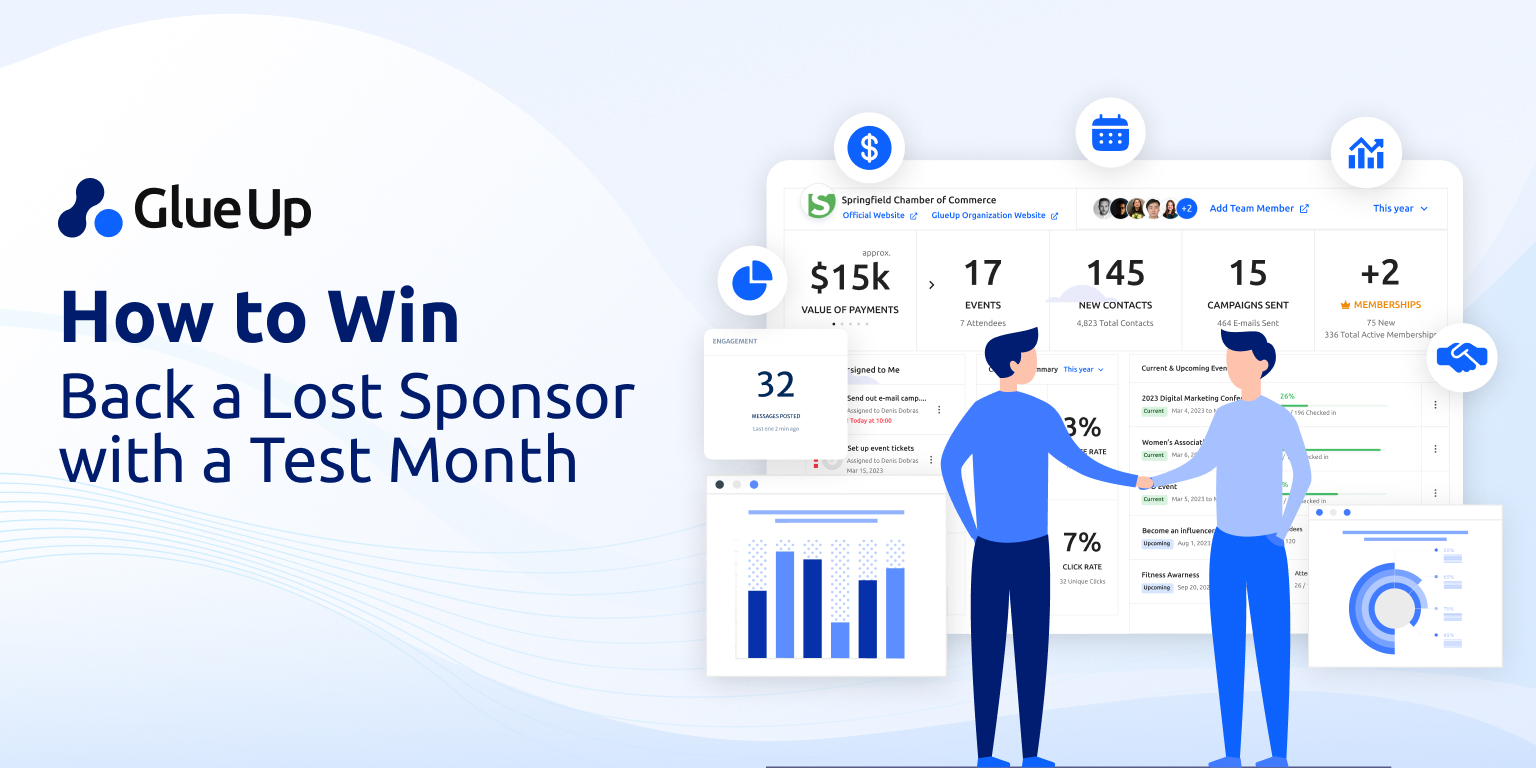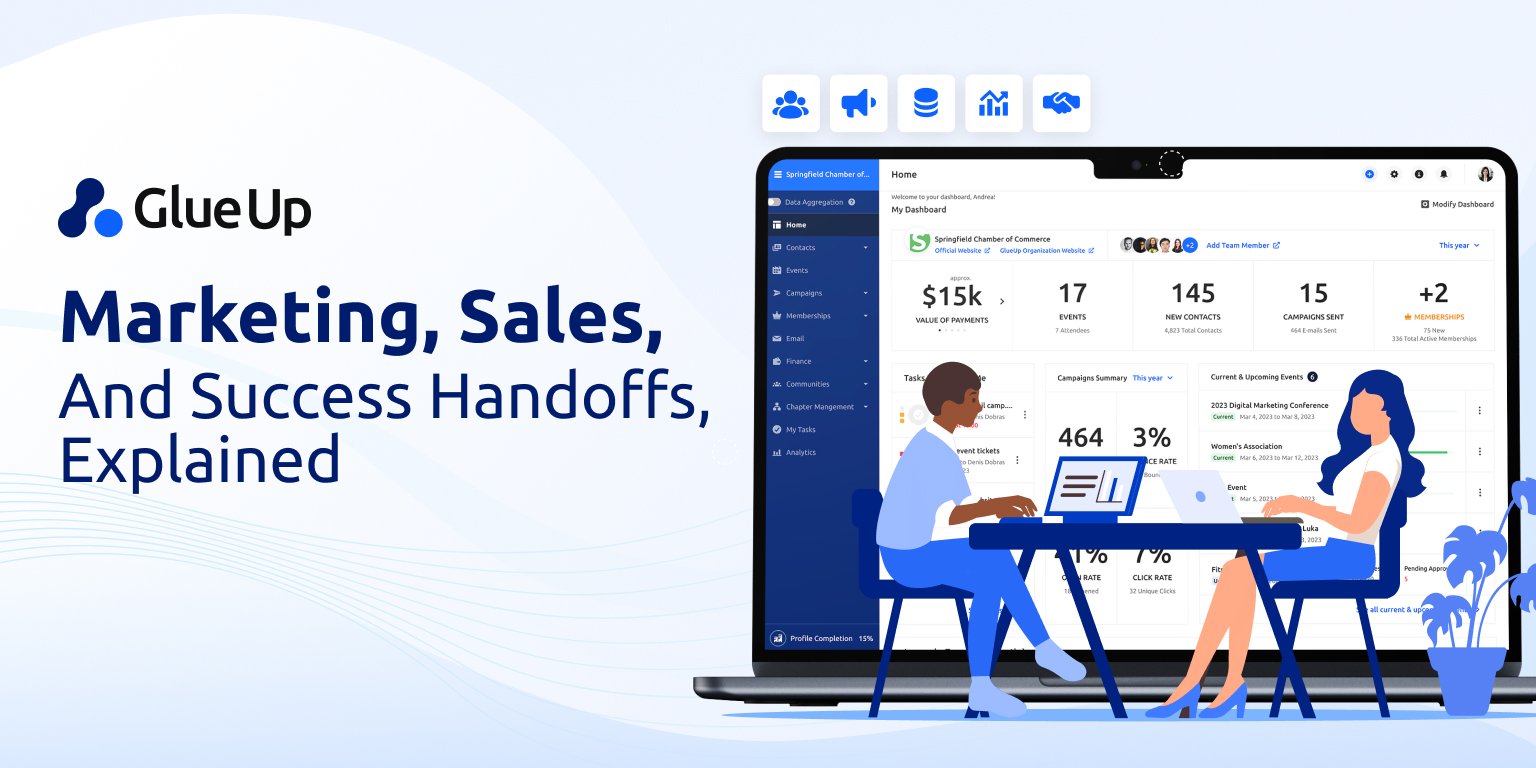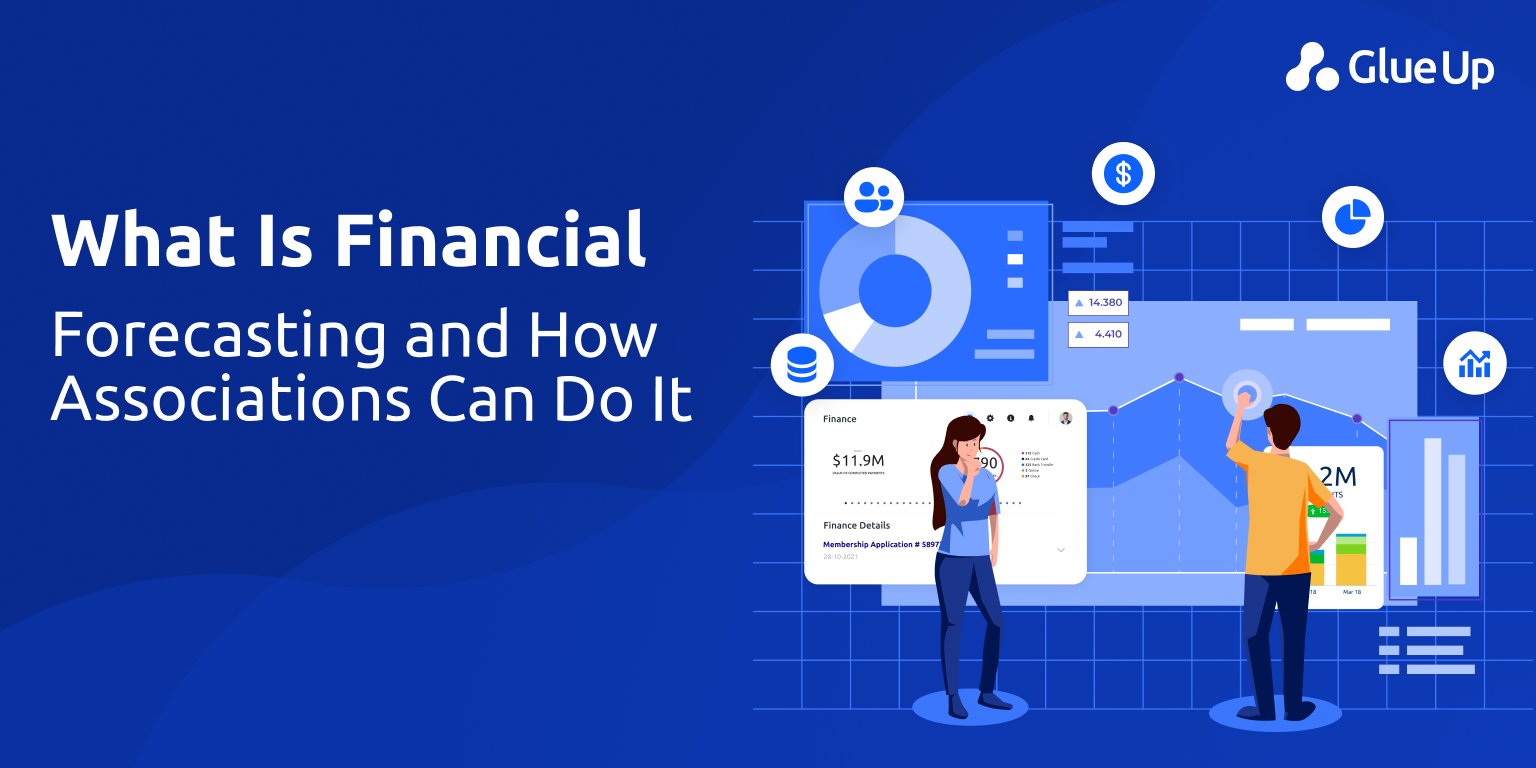
When your board asks, “why aren’t renewals where we expected them to be?” you might feel like saying, “It’s those darn rep, they just aren’t making enough calls.” But you’d be wrong. The real issue is this: you don’t have a sales process design that anyone can clearly follow. If your team is free-wheeling, your forecasting is guesswork. If deals keep stalling in weird places, your pipeline is fiction. And if your board keeps hearing “we’re working it” instead of “we’re on plan,” you’ll find next year’s budget getting trimmed, not increased.
That’s why sales process design isn’t optional for membership organizations, associations, chambers or non-profits, it’s the revenue infrastructure. When done right, it transforms outreach into a sequence of predictable actions. When done wrong, or not at all, you are gambling on charismatic closers while the rest of your pipeline collapses under the weight of ambiguity.
The buyer doesn’t care about your hustle. They care about their agenda, their approvals, and their timing. A sponsor doesn’t buy a booth because you asked; they buy because you’ve helped them justify the investment to their leadership. A prospective member doesn’t sign because you told them it’s a good deal; they sign because you answered the question: “Will this matter in the first 90 days?” When your sales process design aligns with that reality, you win. When it doesn’t, you don’t.
In this article we’ll walk through how to design a sales process your team will actually follow because every stage is logical, measurable, coached, and tied to what your buyer actually cares about. We’ll cover how to map personas, build a 6-stage template you can adapt, choose the right metrics, give your reps the words to use, onboard them properly, and walk into your next board meeting with proof. And yes, we’ll show how Glue Up fits into all of this as the system that keeps it real.
Key Takeaways
You don’t have a “sales problem,” you have a process problem. If renewals, sponsorships, or new memberships feel unpredictable, it’s almost never just “the reps aren’t pushing hard enough.” It’s that you don’t have a clear sales process design. When everyone is improvising, you can’t forecast, you can’t coach, and you definitely can’t defend revenue to the board.
Your process has to match how buyers actually buy. Associations and chambers don’t sell to one person. You sell to groups: CFOs, marketing leads, CEOs, policy people. Deals stall when your internal stages don’t match their internal approvals. Good sales process design starts with buyer mapping, persona-level messaging, and giving prospects the exact one-pager they need to win the internal argument on your behalf.
The six-stage template is your playbook. The path: Discover / Qualify, Diagnose / Shape Value, Propose / Co-Design, Commit / Approve, Close / Sign, Launch / Ongoing Success; becomes the standard. Each stage has one goal, required actions, exit criteria, and specific metrics. If a deal hasn’t met exit criteria, it doesn’t advance. That discipline is how you get predictable pipeline instead of “we’re following up.”
Objection handling, onboarding, and coaching are part of the process. If you don’t script objections (“Too expensive,” “Not this year,” “We tried you before”), reps will make it up, and the message will drift. If you don’t onboard new staff on personas, stages, and stage gates in their first 30 days, the process dies. Onboarding is the enforcement layer of your sales process design. It’s where consistency becomes reality.
The board doesn’t want volume, it wants proof. Leadership and finance are done with “we contacted 300 leads.” They want to see where deals stall, how long each stage takes, what close rate looks like, and whether first-year sponsors or members activate in their first 30 days. When your sales process design is running in Glue Up, one system for pipeline, personas, objections, onboarding, renewals, and reporting, you can answer those questions with data instead of stories. That’s how you get next year’s budget approved.
Quick Reads
How to Create an Effective Membership Sales Funnel • Glue Up
Aligning Marketing & Sales Service Level Agreement • Glue Up
Why Your Sales Process Keeps Breaking (And Why It’s Not Your Team’s Fault)
The reason deals keep stalling isn’t usually because your people aren’t trying. It’s because your process is mis-designed. When your sales process design fails, three big killers emerge.
1. The process doesn’t mirror how your buyer actually buys.
In associations, sponsorships, memberships and renewal, the “buyer” isn’t always the person you talk to first. They might be the CEO, the CFO, the marketing lead, one of their board members, and all of them need to feel this investment is credible.
Research shows that 86 % of B2B purchases stall because internal consensus is missing or the buying journey is mis-aligned. The same applies to membership org sales. If your stage “Proposal Sent” comes before the internal approval group even knows about the proposal, you’re out of sync. The buyer doesn’t see your process as theirs; they see it as a forced march.
2. There are no clearly defined stage gates.
If a deal is “in proposal” for three months and no one knows whether it’s active or dead, it’s not a stage, it’s a limbo. Your sales process design must include exit criteria for each stage, so you know exactly when a deal moves forward, stalls, or gets killed. Without that, you can’t forecast, you can’t coach, you can’t figure out where deals die. One study of 472 reps found that organizations with a mature, managed sales process far outperformed those with ad-hoc processes.
3. Everyone uses a different language.
Your membership sales rep says “interest.” The sponsorship manager says, “soft hold.” The events lead says, “verbal yes.” Finance says, “confirmed cash.” When you don’t speak the same language, your pipeline is a mess. The only antidote: a shared definition of stages, artifacts, hand-offs, embedded in your system. That is what real sales process design demands.
When your process fails on these three fronts, you end up with hero closers, unpredictable revenue, and a board that asks for more outreach instead of more clarity. Fixing the process is not about making your team robotic, it’s about making your revenue defensible.
Sales Process Design Starts with How They Buy
If you’re going to fix your sales process design, you start where it matters: with the buyer. It’s tempting to design your funnel the way you wish you could sell. Don’t. Design it the way they buy.
In practice that means three things:
Map stakeholder and approval journeys
Your sponsor or member buyer has their own internal process: budget submission, review, legal approval, exec sign-off, payment terms. Unless you’ve mapped that and inserted your process to support it, you will still be pushing deals uphill. Designer thinking applied to sales emphasizes this journey mapping as first step.
Segment buyer personas and tie them to stages
In membership-driven organizations you often have at least these three personas:
Sponsor persona: wants visibility, pipeline, influence. Risk: “Will I get return or just exposure?”
First-time member persona: wants access, credibility, networking. Risk: “Will this be another logo on a page?”
Lapsed member persona: wants to know what changed. Risk: “Same old program, same old noise.”
Each persona cares about different value and objections, and each moves differently through sales stages. Your sales process design must reflect that.
Create the value artefact at the right time for the right buyer
A first-time membership buyer might need a one-pager they can circulate to their CFO. A sponsorship buyer might need a lead-capture case study or audience profile. A lapsed member might need a “what’s changed since you left” briefing. If you deliver the right artefact at the wrong stage, your deal will stall.
Glue Up plays here: by letting you store persona-aligned value statements, approval-ready artefacts, stage definitions and hand-offs in one platform, you create consistency and clarity across outreach, renewal, sponsorship and onboarding.
The Six-Stage Sales Process Template You Can Steal Today
Here’s where we become tactical. This is your sales process design blueprint you can adapt right now for memberships, renewals, sponsorships or event-packages in a member-based org.
| Stage | Goal | What Reps Should Do | Exit Criteria | Key Metric to Track |
|---|---|---|---|---|
| 1. Discover / Qualify | Confirm fit and ability to move | Ask: “What are you trying to achieve in the next 6-12 months?”; identify budget owner, timeline, stakeholders | Budget owner identified, timeline defined, main contact + approver named | Qualified rate*; time to qualify |
| 2. Diagnose / Shape Value | Define the outcome that matters to buyer | Use their language, tie your offering to it, outline success metrics (“You told me you want 200 mid-market leads by Q2”) | Buyer confirms this outcome matters to them | % opps with documented success metric; # stakeholders engaged |
| 3. Propose / Co-Design | Give something the buyer can take internally | Create internal-facing one-pager: value, pricing, timeline, next steps | Prospect confirms “I can send this to leadership” | Proposal acceptance rate; days spent in review |
| 4. Commit / Approve | Get the yes and lock the calendar | Walk through approval steps, payment terms, start date; confirm hand-offs to onboarding | Verbal yes on budget + start date + signature path confirmed | Verbal→signed conversion, discount rate |
| 5. Close / Sign | Deal is real, onboarding begins | Contract signed, invoice issued, kickoff date calendarized | Signed agreement, payment terms set, kickoff scheduled | Win rate; average deal size; sales cycle length |
| 6. Launch / Ongoing Success | Show early value and set renewal path | Hand-off to onboarding/member success; schedule first check-in; document early value promise | Buyer internally acknowledges “I see value” | Activation rate (30 days); renewal intent signal |
*Note: “Qualified rate” = qualified opps ÷ leads.
We built this because sources emphasize tracking each stage’s transition and time spent.
Why does this work? Because you are a system your buyer moves through and your team follows. Your sales process design becomes the contract, the measurement instrument, and the coaching tool all at once.
And if you’re using Glue Up, you can implement each of these stages, stage-exit criteria, pipeline-health metrics, and renewals path in one unified interface rather than five spreadsheets.
How to Map Buyer Personas to Each Stage (So Your Pitch Always Lands)
We already introduced personas. Now let’s apply them, tied to stages, so your reps always say the right thing, at the right time, in the right format.
Persona A: Sponsor who needs leads
What they want: “We need to meet 200 decision-makers this year, and we need proof you deliver them.”
Their fear: “We’ll spend and not get those leads, and they’ll say ‘we tried that last year.’”
What you give at Stage 2: Audience profile + recent lead metrics + testimonial from a similar sponsor.
What you give at Stage 3: Internal justification one-pager, blank budget line item they can drop in.
Metric to monitor: # leads delivered per sponsor in first 90 days; renewal rate for similar sponsor.
Persona B: First-time member company
What they want: “Will this actually help us get access, credibility, networks?”
Fear: “This is just a logo, and we’ll do nothing for 12 months.”
Stage 1 contact: “What outcomes are you hoping to achieve from membership this year?”
Stage 2 value shaping: “You told me you want introductions to regional policymakers and peer-networking. Here’s our program.”
Stage 3 artefact: Two-column justification sheet: (left) what they said they want; (right) how we deliver.
Metric: Engagement index in first 60 days; first-year renewal rate.
Persona C: Lapsed member
What they want: “What’s different this time around?”
Fear: “I did this and got no value last time.”
Stage 1 qualification: “What made you leave and what’s changed since you left?”
Stage 2 diagnosis: Use their feedback to frame new value: “You said last year you got nothing, here are the new onboarding steps, the new peer-roundtables, the new accountability check-ins.”
Stage 3 asset: Case study of a former lapsed member who returned and got value in first 90 days.
Metric: Re-activation rate; churn risk score at 90 days.
Integrating this persona-mapping into your sales process design means your team always has a script, a tailored value proposition, and a clear approval path. Glue Up helps you bundle all of that into the same workflow the reps already use, so they don’t have to hunt around for slides, email threads, or memory.
Objection Responses Your Team Can Use Right Now
A sales process only works if your team speaks the same language. Here are three high-impact objections with reframed responses, turn these into your playbook, lay them into your sales process design, and make sure your reps practice them.
Objection: “Your membership fee is too high.”
Response: “I hear that. Most first-time members say the same thing before they see what actually happens in the first 90 days. You told me you needed 50 introductions to potential partners in Q1. Here’s exactly how we get you in front of 30 by Month 3, and here’s how we measure it. If you don’t see those introductions, you don’t move to the next tier.”
Why it works: You’re validating the cost concern, reframing around outcome, and specifying a measurable proof of value early.
Objection: “We’re not ready to sponsor this year.”
Response: “Timing is real. The reason sponsors lock in early is placement. Once the top-tier booth corners and keynote slots are gone, they’re gone. Can I send you a one-page snapshot you can use internally to show decision-makers what we’ve already locked for this year, so you’ll avoid getting placed in the lower visibility zone?”
Why it works: You shift urgency from “buy now” to “secure position before someone else does,” almost removing the “sales” language entirely and replacing it with “internal decision-making support.”
Objection: “We tried this before and didn’t get value.”
Response: “That’s completely fair, and honestly, I’d be skeptical too. Can I ask a question: last time you joined, was there a structured onboarding that said, ‘Here’s what you’ll see in Month 1, Month 3, Month 6,’ or were you just left to figure it out? The reason I’m asking is our current onboarding playbook is built precisely so new sponsors/members get value before Day 30, not in month 9 or 12 when you’ve forgotten why you signed.”
Why it works: You legitimize the past experience, and you flip the conversation from feature-list to onboarding and early value, exactly where renewal risk lies.
Make sure your sales process design playbook embeds these scripts at the relevant stages. If you don’t, your reps will still wing it. If they wing it, you’ll never improve your pipeline.
Glue Up makes it easier: you store these responses, tie them to specific objections per persona, and force the rep to log which script they used and what the outcome was. That means you can coach and refine in real time.
Onboarding Is the Adoption Engine (How to Train Reps So They Actually Follow the Process)
Designing the process is one thing. Getting your team to use it is another. Most process changes fail because onboarding is either non-existent or too heavy on features rather than behavior. Here’s how to build onboarding that drives adoption of your sales process design, in a member-based org context.
Week 1: Purpose, Personas, Pillars
Teach: Why we need a process (board pressure, renewals, revenue accountability)
Teach: Who we sell to (sponsor, first-time member, lapsed member)
Teach: How the 6 stages work – what happens, why it matters, how the buyer moves
Week 2: Practice, Role-play, Role-review
Live scenarios: sponsor objection about price; lapsed member objection about value
Stage drills: when to move from Diagnose → Propose, when to kill a deal
CRM workflow review: how to move a deal, log a stakeholder, set next action
Week 3: Coaching, Forecasting, Feedback
Review real pipeline: which deals are stuck where? What’s blocking them?
Call reviews: pick two live calls, deconstruct whether process was followed
Leadership review: forecast based on stage-exit criteria, not gut feel
Week 4: Handoff & Success Metrics
Onboarding hand-off: ensure first-year member or sponsor has kickoff meeting, success check-in scheduled
Review: activation metrics at 30 days, did they use the membership/sponsorship?
Set renewal intent check-in for Month 10
Studies show organizations that invest in structured onboarding of process and buyer reality, see measurable lift in revenue and reduced ramp time.
When you embed this in your sales process design, it becomes the way you run your revenue machine. And when you’re using Glue Up, new reps don’t join and fumble through five systems, they log in and the playbook, pipeline, personas, and objections are already there. Less chaos. More clarity.
What Your Board Actually Wants to See
It’s easy to write “we made 300 calls and got 50 leads” on a slide. It’s harder to walk into the board room and answer three questions:
Where are opportunities getting stuck?
How long does it take from first meaningful contact to signed deal?
What’s the activation or renewal rate for first-year sponsors/members?
If you can’t answer those, you’re giving a story. Your board doesn’t want “we’re confident.” They want “we’re forecastable.” They want to know pipeline health.
When your sales process design is strong:
You know Stage 1 → Stage 2 conversion rate, so you can ask: “If we increase budget owner identification by 20 %, we’ll shift 30 % more deals.”
You know how long deals sit in Stage 3, so you can say: “We’ll reduce review time by 7 days and accelerate close by 10 %.”
You know 30-day activation for new memberships, so you can tell the board: “90 % of new members logged in and scheduled a peer introduction meeting within their first 30 days, renewal risk is low.”
If you do this, the board says, “thank you” instead of “so what?” Because you’ll be running revenue like an operational factory.
And yes, Glue Up shows you this. From membership application through renewal, from sponsorship upsell through event activation, it keeps all the pieces in one system. You walk in ready.
Where You Go from Here
You need a sales process design everyone follows, leadership measures, and the board trusts. You need structured stage-exit criteria, persona-specific value, and onboarding that drives activation. You need one system where pipeline, personas, objections, onboarding, and renewal live together.
If you don’t get this right for 2026, you’ll walk into next year’s budget meeting with a story. If you do get it right, you walk in with proof. Only one of those gets you funding.
Start today: pick one revenue stream (say, event sponsorship) and map it through our six-stage template. Identify your buyer personas. Lock your exit criteria. Choose your key metrics. Train your team for one-hour next week using the scripts above. Then watch as your process starts behaving like a system.
Your board will thank you. Your reps will feel clarity. Your members, sponsors and event buyers will move more smoothly. And you’ll finally have a sales process design your team follow.



